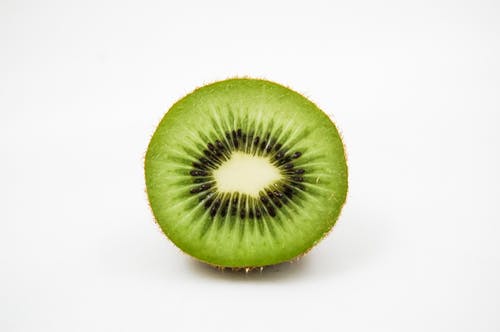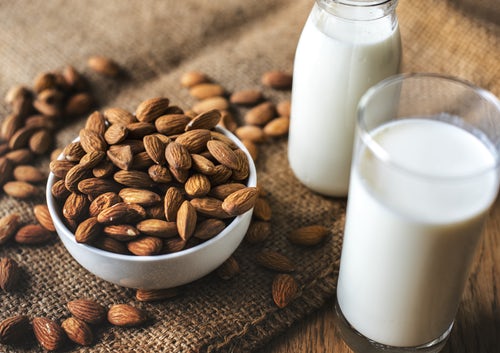Progesterone is one of the sex hormones best known for the roles it plays in regulating healthy menstruation, fertility, libido and foetal development.
Most importantly after ovulation, progesterone sends the signal to the inner lining of your uterus (womb) to thicken in preparation for a fertilised egg and creating the environment necessary for implantation, foetal development and maintaining pregnancy.
All pretty essential stuff to know about if you’re pregnant or planning on falling pregnant any time soon, but progesterone is important beyond its role in maintaining a healthy pregnancy.
Some of the signs and symptoms that you may be low include migraines, low libido and depression all of which can evidently dramatically impact your daily quality of life.
Therefore, if you’re a woman planning on pregnancy or just a woman keen on enjoying your sex life and feeling well, it’s worth finding out a little about progesterone.
That way if you’re not where you’d like to be the power to do something to up your progesterone levels and change this is in your hands.
One such thing you can do to increase your progesterone levels if you suspect or know you are low is to consider eating more of certain foods such as the 7 suggestions I provide in this blog as well as reduce your stress levels as progesterone and the stress hormone cortisol vie for production (more on what you can do about this further on), first you may want to identify if you could be low in progesterone…
How Do I Know If My Progesterone Levels Are Low?

There is quite a long list of signs and symptoms you may experience that could indicate your progesterone levels aren’t normal, including:
- Irregular menstrual cycles (including long or heavy periods or spotting between periods)
- Headaches or migraines
- Mood changes including anxiety and depression
- Low libido
- Fibroids and endometriosis
- Thyroid dysfunction
- Weight gain
Why Might My Progesterone Levels Be Low?

Your progesterone levels may be low if you’re not ovulating regularly (or at all, for example if you are on some forms of the oral contraceptive pill), if your body can not synthesise enough progesterone (from the foods you are eating which we will talk about in more detail soon) or if you are chronically stressed (more on this later also).
In addition Some conditions, such as hypothyroidism, or polycystic ovarian syndrome (PCOS), can cause infrequent or absent ovulation, which may also lead to low progesterone levels.
What Can I Do to Support My Body’s Production of Progesterone?

Unlike the vitamins and minerals, when it comes to progesterone it’s a little more complicated than simply eating foods containing progesterone because there is no food which contains progesterone.
Rather there are certain key nutrients you can focus on and ensure you are getting in your diet in order to supply your body with the materials it needs to make progesterone in adequate amounts.
In other words, for your body to produce progesterone at healthy levels you need to supply it with the raw ingredients to make progesterone and those ingredients are found in the foods you eat.
You can liken your body’s ability to make progesterone (and any of the hormones) to making a cake. In that if you want the cake to work out you need all the ingredients.
You can’t just have the sugar and egg if you want to create an epic chocolate cake.
So, what ingredients do you need to eat to make progesterone?
7 Foods to Eat to Support Your Progesterone Production
- Eggs

Key Nutrient: Cholesterol
First and foremost, when it comes to healthy production of progesterone cholesterol is key.
This is because your body uses cholesterol as the building block to make progesterone (and the other sex hormones oestrogen and testosterone also).
The yolk of eggs is a good source of cholesterol.
Other sources of cholesterol
All foods of animal origin contain cholesterol to varying degrees, for example prawns, beef, chicken, milk, cheese and yoghurt.
2. Salmon

Key Nutrient: Omega-3 Fats
Increased intake of omega-3 fats has been linked to an increased production of progesterone.
Salmon is a good source of omega-3 fats.
Other sources of omega-3 fats
Tuna, Sardines, chia seeds, flaxseed, hemp seeds.
3. Oysters

Key Nutrient: Zinc
Zinc is one of the minerals involved in a number of catalysis reactions within our bodies including the reactions along the chain leading to progesterone production.
Other sources of zinc
Pumpkin seeds also contain zinc in good amounts as do other nuts and seeds.
4. Kiwi Fruit

Key Nutrient: Vitamin C
Vitamin C is an antioxidant and as an antioxidant it helps prevent oxidative stress and free radical production both of which can otherwise interfere with adequate progesterone production.
Other sources of vitamin C
All fresh fruits and vegetables contain vitamin C to varying degrees. If you ensure you are getting a variety each day, there’s not any specific ones I would say to focus on as they each contain different types and concentrations of other vitamins, minerals and other beneficial compounds such as phytonutrients.
5. Chickpeas

Key Nutrient: Vitamin B6 (Pyridoxine)
Vitamin B6 or what as it’s known in it’s active from Pyridoxal 5 Phosphate, is necessary for the development of the corpus luteum which is the cluster of cells that grows each month within your ovaries, and which is responsible for producing progesterone. Therefore, low B6 can mean less cells producing progesterone.
Other sources of vitamin B6
Other good sources of vitamin B6 include beef liver, salmon and tuna, turkey, starchy vegetables (potato and sweet potato) and bananas.
6. Dark Chocolate

Key Nutrient: Magnesium
Magnesium is involved in the catalysis of reactions involved in the production of progesterone.
Other sources of Magnesium
Dark chocolate or raw cacao is a good source of magnesium as are nuts and seeds, some vegetables (in particular the green leafy ones) and seafood.
7. Almonds

Key Nutrient: Vitamin E
Vitamin E has been shown to boost progesterone levels and is often recommended for post-menopausal women whose progesterone levels drop.
Other sources of vitamin E
Other good sources of vitamin E include other nuts and seeds such as sunflower seeds and Brazil nuts as well as in lower amounts green leafy vegetables.
Important: The Link Between Stress and Progesterone

What is just as important as eating all the above foods is actively decreasing your stress levels because your body uses the very same chemicals to make progesterone as it does to make the stress hormone cortisol.
What this means is that when you are under chronic stress your body is going to divert these nutrients to making more of the stress hormone cortisol and less of the sex hormone progesterone.
This is because stress and your body’s natural fight or flight response is a survival mechanism and therefore production of cortisol to maintain the stress response takes priority over production of the sex hormones, including progesterone.
Essentially it doesn’t matter if you have a sex drive or not or if you’re capable of falling pregnant if you’re going to die.
Which means at the end of the day you can eat perfectly, be getting all the nutrients necessary for your body to produce progesterone in ample amounts but if you’re under chronic stress it doesn’t matter, because you’re body is using those nutrients elsewhere.
Don’t just accept being stressed all the time or plan to be less stressed in the future after this happens or when this person stops doing x, y or z. Do something about the stress now. Take real steps to learn how to decrease your stress levels for example see a clinical hypnotherapist, learn mindfulness or meditation because we all struggle, we all go through tough times but we don’t have to stay there and struggle forever.
Take Home Messages

Progesterone is a key hormone in regulating healthy menstruation, fertility, libido and fetal development.
There are many reasons your progesterone levels may not be normal and if you are experiencing any of the signs that this could be the case (for example irregular or long and heavy periods, spotting between periods, headaches and migraines, mood alterations including depression and anxiety) it is definitely worth seeing your GP in order to rule out or treat underlying causes (including PCOS or endometriosis).
In order to ensure your body has all it needs to build progesterone there are a number of nutrients you may want to ensure you are eating on a daily basis these include cholesterol (also produced within your body), omega-3 fats, zinc, vitamin C, vitamin B6, vitamin E and Magnesium.
Some examples of good food sources of these are eggs, salmon, pumpkin seeds, chocolate, fresh fruits and vegetables and chickpeas.
In other words, the same message I am (and any skilled Dietitian in the world is) constantly advocating for, eating a variety of foods in amounts which meet your energy needs daily.
Variety, variety, variety really is key because as you’ve seen above it is not one nutrient alone which will ensure your progesterone production is the ensured but a complicated interaction between a whole range of nutrients.
On top of this it is important to decrease your stress because the production of stress hormones, in particular cortisol, takes precedence over the production of the sex hormones, including progesterone.
Which means you can be eating all the right things, have all the right nutrition on board to produce progesterone in healthy amounts and still not.
If you are pregnant, trying to fall pregnant, going through menopause or just a woman wanting to improve your mood or enjoyment of sex please find a great Dietitian, make the phone call and go see them.
It’s definitely worth getting the right information and support as soon as possible and it might just change everything…
With my whole heart I hope you found this information useful and inspiring.

Become Great. Live Great.
Bonnie.



